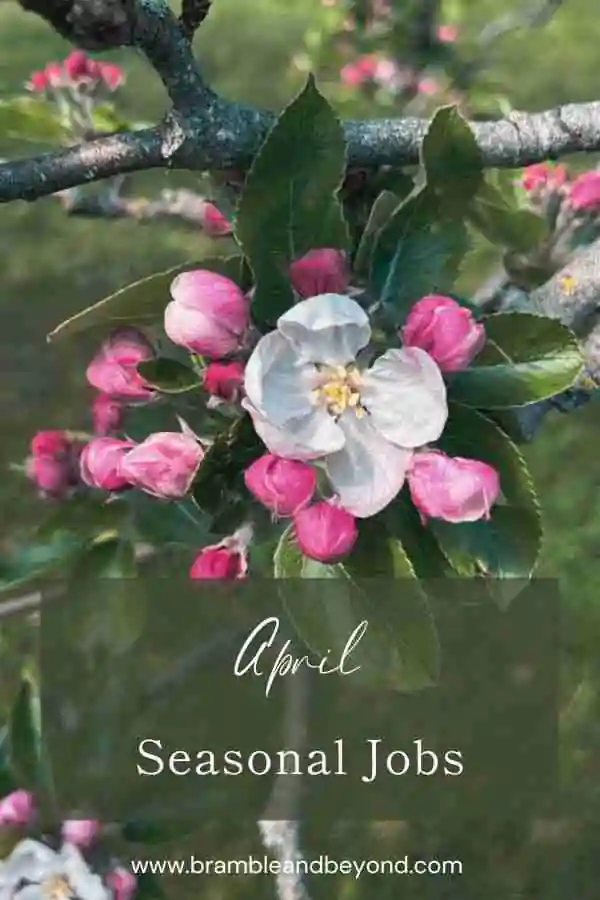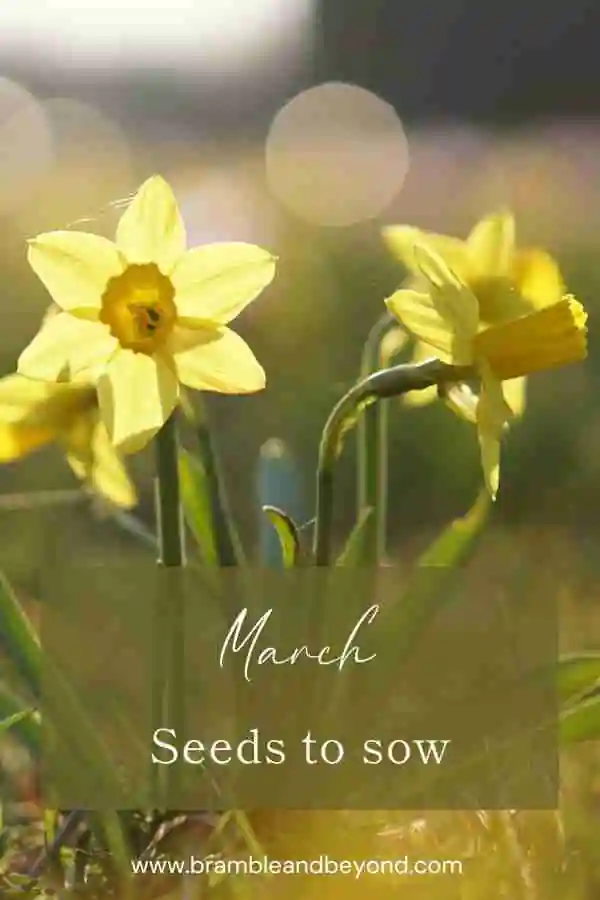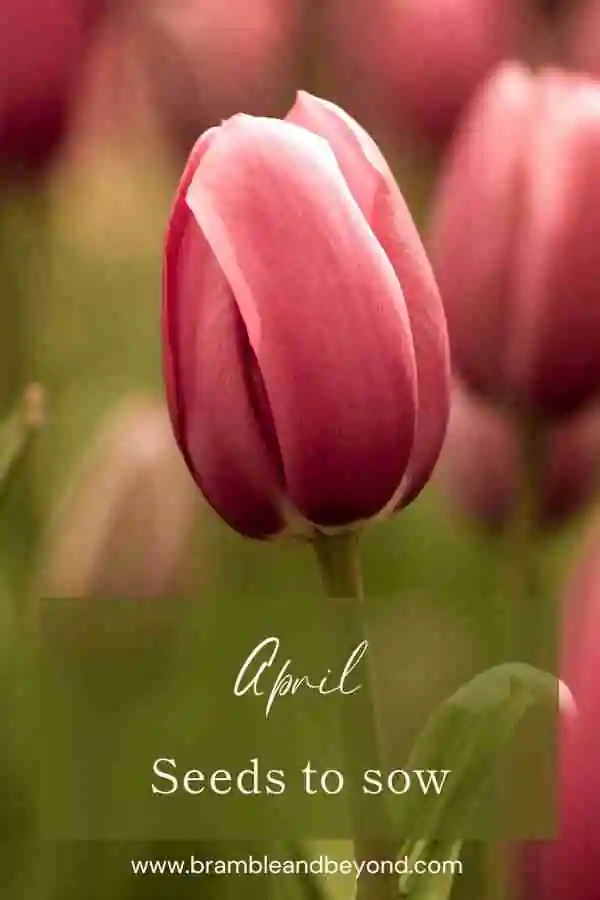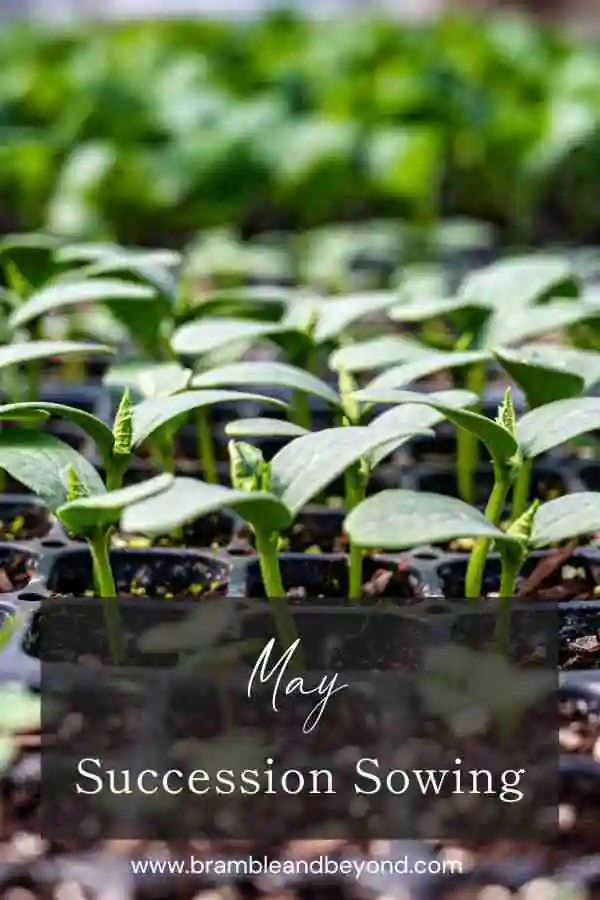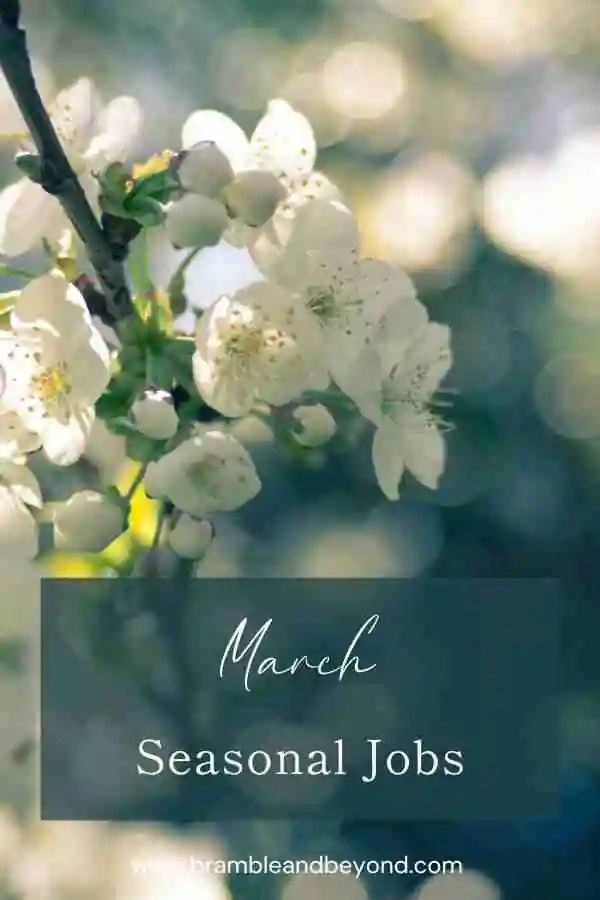Disclosure: This post may contain affiliate links, meaning I get commission if you decide to make a purchase through my links, at no cost to you. Please read my Affiliate Disclosure for more information.
Spring has finally arrived, and for flower enthusiasts, that means it’s time to dive into the flower garden. April is the perfect month to roll up your sleeves and get your hands dirty, as you prepare your garden for a rewarding harvest of beautiful flowers.
April garden tasks
But where should you begin? Figuring out which tasks to prioritise can be overwhelming, whether you’re a seasoned gardener or just starting out. That’s why we’ve created this essential guide to help you tackle the most important April garden tasks for a successful flower garden. From planting seeds to providing support and watering, we’ve got you covered. So grab your trusty trowel, and let’s get started!
Start seed sowing
Starting a cutting garden can be such an exciting and fulfilling experience! One of the best parts is sowing the seeds that will eventually grow into stunning flowers. April is the perfect time to start seed sowing, as the weather gets warmer and the soil becomes ready for new growth. But before you jump into planting, it’s important to have a plan in place.
To begin, select the perfect seeds for your flower garden. Think about the types of flowers you want to grow, consider your colour palette for cohesive arrangements, and choose seeds that are suitable for your climate and soil conditions. Ordering seeds online is usually a great option, as it provides a wider selection and fresher seeds compared to shops and garden centres.
For more ideas on what to sow in April, you can check out this post.
Unless the last frost date has already passed in your region, it’s likely that all seed sowing in April needs to be done indoors. Don’t worry if you don’t have a greenhouse; you can start many seeds on your windowsill. If space is limited, soil blocking is a technique that allows you to fit more seeds in a smaller area.
Make sure to follow the instructions on the seed packet regarding sowing conditions, such as depth, warmth, and light. Keep the soil moist but not waterlogged, and then be patient while waiting for the first signs of growth. You may even see the first shoots within a few days!
Starting your own seeds is not only a cost-effective approach, but it also gives you a head start on your cutting garden. With careful planning and nurturing, you’ll be rewarded with a bountiful harvest of fresh blooms to enjoy throughout the season.
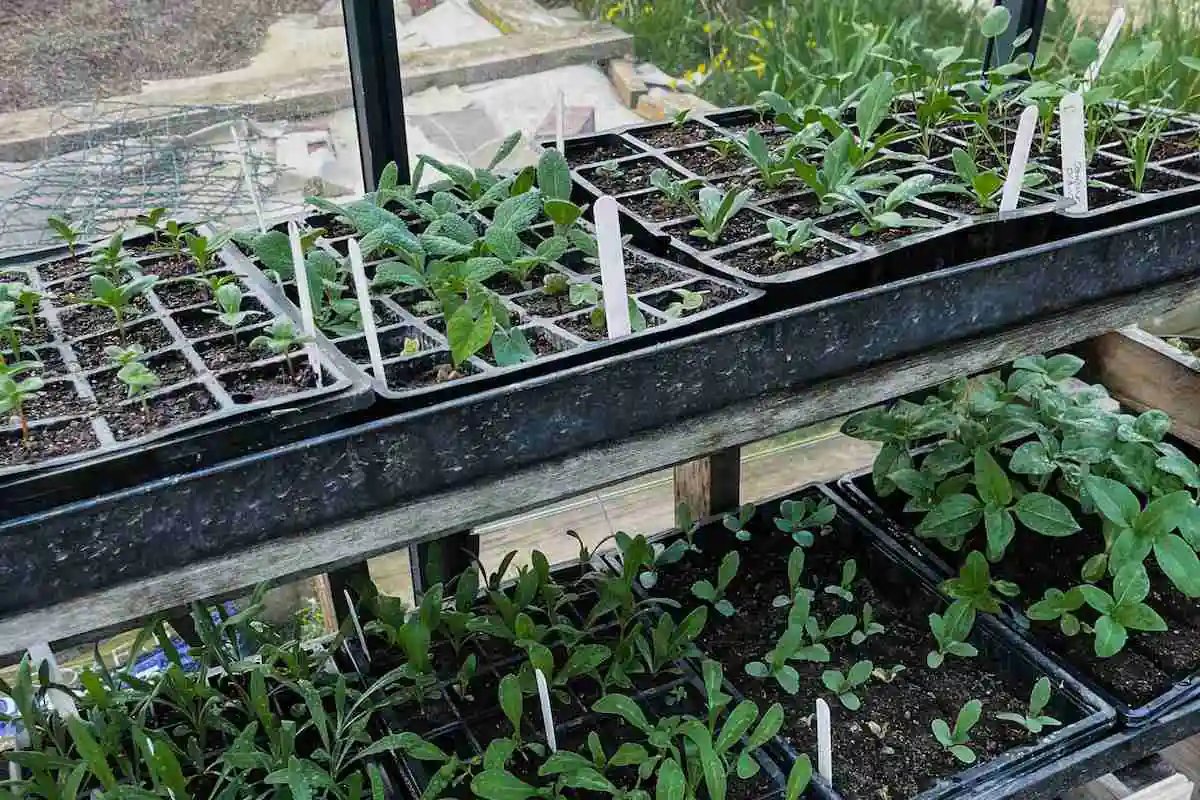
Prepare garden beds
To make sure your flower garden thrives and is filled with beautiful blooms this season, it’s important to start with a clean slate. Clearing away any debris and pulling weeds is a great way to begin maintaining the health of your garden. This not only provides your plants with space to grow and access to important nutrients, but also eliminates potential hiding spots for pests and diseases.
If you already have existing beds, giving them a quick once-over with a hoe on a sunny, dry day will be enough. The weed seedlings can stay where they are and will quickly wilt and die in the sunshine without needing to be removed. In a small way, this will also add some nutrients back into the soil.
However, more stubborn perennial weeds like dandelions, nettles, and thistles should be completely pulled out, leaving no remnants. Anything that remains in the soil tends to regrow, although if you consistently remove it whenever you see it, the plant will eventually lose its strength.
Once you have weeded your existing beds, you can add a top dressing of compost or other organic matter to the soil to help it retain moisture.
By preparing your garden beds before sowing your seeds, you give them the best possible chance to succeed.
Plant out autumn sown seedlings
April is the perfect time of year to prepare your garden for early flowers. If you have any seedlings that were sown in autumn and have been kept indoors over the winter, now is the ideal moment to transplant them into your garden beds.
Seedlings sown in autumn should bloom earlier than those sown in spring, as they have had more time to establish and develop their roots. Once the garden starts to warm up, they will be ready to thrive. The same applies if your autumn-sown seedlings have been outside throughout the winter!
But that’s not all – this is also a wonderful opportunity to introduce some new plants to your garden. Whether you’ve acquired a few new flowers or some fresh herbs, planting them now will allow them ample time to establish themselves before summer arrives.
Prune flowering shrub perennials
As the weather warms up and spring progresses, it’s a great time to give some extra attention to your garden’s perennials. Lavender and penstemon can benefit from a gentle trim during this season. By removing any dead or woody stems, you can encourage healthy new growth and help your plants produce more beautiful blooms later in the season.
When pruning your lavender, focus on removing any old flowering stems or brown or dead stems. Trimming any side shoots can also help your plant grow fuller and bushier. However, since lavender is an evergreen plant, be careful not to cut it back too hard as it may not grow well.
For perennials like penstemon that don’t die back over winter, simply cut back the stems just above the lowest set of leaves. This will help keep the plant compact and encourage more flowers to bloom.
Once you’ve finished pruning, take a moment to tidy up any debris or dead leaves around the base of your plants. This will help prevent any potential disease or pest issues from arising.
With your shrub perennials well taken care of, it’s now time to shift your focus to protecting the delicate new shoots of your other plants.
Protect new shoots from pests
After you’ve finished pruning and cleared away the debris, it’s time to focus on protecting your delicate plants from slugs and snails. These pesky critters can cause damage to your garden by munching on the tender new shoots of hostas, delphiniums, lupins, and other plants. But don’t worry! There are steps you can take to safeguard your garden from these slimy pests.
One effective solution is to create barriers around your plants using copper tape or mesh. Slugs and snails don’t like copper and will avoid crossing it. Another option is to sprinkle diatomaceous earth around the base of your plants. This powdery substance, made from fossilized remains of tiny aquatic organisms, is sharp enough to deter slugs and snails. You can also set up beer traps: bury a jar filled with beer up to its neck and place it near your vulnerable plants. The slugs and snails will be attracted to the beer and drown in the jar.
I’ve also had good results using a mulch called Strulch, which is processed wheat straw. It not only keeps weeds at bay but also helps retain moisture.
Once you’ve taken steps to protect your delicate plants, it’s time to move on to trimming your foliage shrubs. By cutting these plants down to the base, you’ll encourage healthy new growth and ensure that your garden is full of life this spring.
Cut back foliage shrubs
One great way to help your garden flourish is by trimming back certain plants to encourage new growth. For instance, if you have dogwoods, willows, smoke trees, or eucalyptus in your cutting garden, think about cutting them all the way down to the base. This will stimulate robust new growth and guarantee fresh and vibrant plants for the spring.
These plants provide excellent structural elements for floral arrangements, and the new growth is especially wonderful for adding colour and foliage.

Put in place a support system
Having a staking and support system in your cutting garden is really important. It helps keep your plants upright and prevents them from breaking under the weight of their blooms.
When you closely plant your flowers in a cutting garden, they can support each other to some extent. However, for heavier or taller plants, additional support is necessary. Without it, your plants might fall over or bend, making it difficult to harvest them for your arrangements.
There are different materials you can use to create a staking and support system, like bamboo stakes, metal cages, or even homemade wooden structures. The key is to choose a strong material that can handle the size and weight of your plants, while still allowing you to easily harvest the flowers.
It’s important to install the support before your plants grow too much. As your plants continue to grow, keep an eye on the placement of your supports and make adjustments as needed. This will help prevent any damage that strong winds or heavy rainfall could cause.
By making sure your plants have the right support in place, you’ll be able to enjoy a beautiful cutting garden throughout the entire season.
Create a watering system
Maintaining adequate moisture levels is incredibly important for a successful flower garden. While it’s possible to water your plants using a hose, this method can be quite time-consuming. Additionally, it may not guarantee the best distribution of water that is necessary to keep your garden in good health.
Installing a watering system can simplify the process and save you valuable time. It’s much easier to do this before your plants begin to grow.
Consider using a drip irrigation system that delivers water directly to the soil. This system has several benefits, including reducing water waste and minimising the risk of overwatering, which can lead to root rot and other issues.
Another advantage of a drip irrigation system is its ease of installation and customisation. You can easily tailor it to meet the specific needs of your plants. For example, you can set up the system on a timer so that your plants receive water at the ideal time of day. You can also adjust the flow rate based on the size of your garden and the types of plants you are growing.
With the right support and watering system in place, your flower garden will thrive throughout the entire growing season.
In conclusion, if you want your flower garden to be productive, it’s best to start preparing it in April. following some of these April garden tasks. By sowing seeds, tending to the garden beds, pruning lavender and penstemon, protecting delicate plants, and installing staking and watering systems, you will give your plants the best opportunity to grow and flourish.
Remember to regularly care for your garden, and soon you will be rewarded with beautiful blooms that are perfect for cutting.
Happy gardening!

